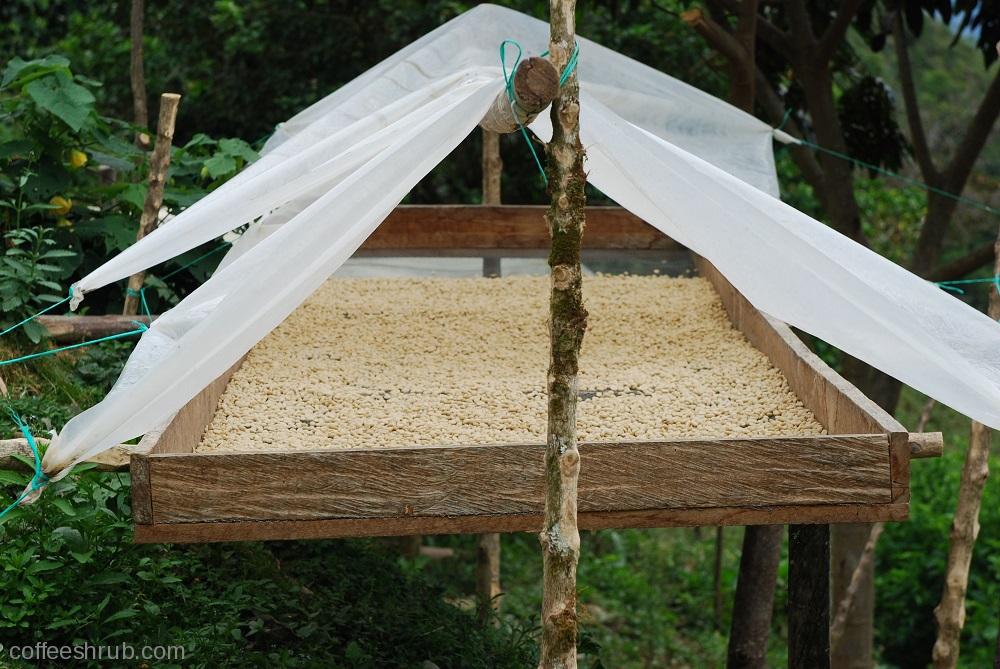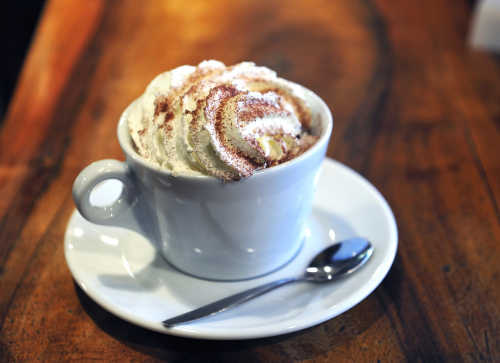The culture of coffee in different countries, the difference between Jamaican Blue Mountain and Comprehensive Blue Mountain Coffee
The culture of coffee in different countries
1. Jamaica (Jamaica) mentioned Jamaica and we immediately thought of "Blue Mountain" coffee. Rare and expensive blue mountain beans, originally from the Wallensford Coffee Garden, have now expanded to the Blue Mountains, which are more than 1,000 meters above sea level. as long as the tree species and treatment procedures of the estate meet certain standards, the government will issue a guarantee to allow the use of the name "Blue Mountain". It used to be the protagonist of coffee mythology, but many people think that the legendary characteristics-rich aroma, complete texture, perfect combination with even and palatable sour taste-are no longer there, and the beautiful sour taste that existed 15 years ago can only be found in memories. In spite of this, its price still goes up. In Taiwan, the retail price of guaranteed raw beans is usually more than 2000 yuan per kilogram. In the market for raw beans, which are commonly packed in gunny bags, blue mountain beans that insist on barrel packaging show their extraordinary price. The term "Jamaica High Mountain" refers to coffee beans grown in other mountains less than 1,000 meters on the island, which are of relatively ordinary quality and have a mild texture and sour taste. As for "Blue Mountain Blend" or "Blue Mountain Style" coffee, it is usually a combination of good Colombian beans, intended to imitate the taste of Blue Mountain, and has nothing to do with Jamaica. You won't find any real blue beans in Blue Mountain coffee.
two。 Beans from the Dominican Republic of the Dominican Republic (Dominican Republic) are often called "Santo Domingan" (their old country name), where coffee plantations are mainly surrounded by mountains in the middle of the island. There are four kinds of washed alpine coffee on the market: Cibao, Bani, Ocoa and Barahona. The latter three are especially praised. The sweet taste of soft ripe fruit is very similar to that of Haitian coffee, while Balahona has a high acidity and a thick taste of typical Caribbean beans, which is close to the Jamaican mountains in quality and characteristics. Baking to medium depth best highlights their sweetness.
3. Cuba (Cuba) cigars, coffee and sugar cane, as the three major industries of the Republic of Cuba, enjoy a high reputation in the world. Cuban Crystal Mountain Coffee ranks among the top in the world. Crystal Mountain is adjacent to Jamaica's Blue Mountain Mountains and has similar climatic conditions, which is comparable to Jamaica's Blue Mountain Coffee. Similarly, the annual output of imported coffee from Crystal Mountain in Cuba is not high, so most of the time there is no market. The most representative is the "Cubita Coffee" of the three major coffee in Cuba, which is known as the coffee with unique Caribbean flavor and has become the designated coffee of the Cuban embassy.
4. Puerto Rico (Puerto Rico) beans, named after the special Yauco Selecto, are the best example of Caribbean beans, with a rich texture, balanced taste, gentle but complex depth. Deep-baked Caribbean beans do not have the rough burning taste common in other deep-baked beans and are suitable for filter kettles (Plunger or French Press) and other cooking methods that have been soaked for a long time.
5. The word Mocha in Yemen has many meanings. Around 600 AD, the first coffee bean far from its hometown, Ethiopia, took root in the leaf gate on the other side of the Red Sea and started the coffee industry all over the world. Since the most important export port of Yemeni coffee in the early days was the port of Mocha (now silted up), the coffee produced in Yemen was also called "mocha" beans. Over time, some people began to use "mocha" as a nickname for coffee. The situation is similar to that in Java today. Later, because the aftertaste of mocha coffee resembled chocolate, the word "mocha" was extended to be a mixture of hot chocolate and coffee. Therefore, the same is "mocha", mocha beans, mocha pot and Italian coffee in mocha coffee, but represent three meanings. Today's Yemeni mocha (Yemen Mocha) is no different from its ancestors more than a thousand years ago, and is the most advanced traditional hand-dried bean-although it varies in size and contains a lot of impurities. The two most common producing areas are Mattari and Sanani; Matali beans have more texture, chocolate and sour taste, while Shanani beans are more balanced and fragrant. Generally speaking, the average size of mocha beans is small, with the wild and spicy smell of ginger, bright and unique taste, pleasant fruit acidity, and rich wine-like texture, no wonder it is known as the Bordeaux wine in coffee. In mixed coffee, mocha usually plays the role of high-pitched voice, responsible for stimulating and improving flavor.
6. Ethiopia (Ethiopia) the highlands of Ethiopia are the birthplace of coffee. The traditional drying method is still used to produce mocha-Hara beans (Harrar,Harari,Harer or Harar) at an altitude of about 2,000 meters near Harrar in the east. Hara has a medium texture with a fruit wine-like flavor, and a good Hara is as wild as the best Yemenmoka. Dried beans from other regions, such as Gimbi or Ghimbi, Jima,Jimma or Djimah and Sidamo, are equally wild and wine-like, but less rich and slightly rough. The water-washed mocha from Jinbi in the west has the same sour wine as Hara, but it is packaged with a richer and balanced feel and a thicker texture. As for water-washed beans from the south, such as Sidamo and Gemma, they keep less sour wine and replace them with more gentle and delicate flavours of lemon and flowers. The best is produced in a high, narrow area of Sidamone, called Yirgacheffe, whose rich taste brushes the taste buds and leaves an endless aftertaste, while the slightly sour taste is similar to Sumatra, swimming in a rich texture; in addition, it adds a unique soft floral fragrance, which is really the only coffee in the world.
7. Most of the Tanzanian beans in Tanzania grow in the Mr. Kilimanjaro and Mt mountains near the northern Kenyan border. The Meru area, often called "Clemangaro", is occasionally named after the distribution center Moshi or Arusha. In addition, on the southern side of the border, a little washed Arabica beans are produced, named after the nearby big city Mbeya or the distribution center Pare. The grading method is similar to that of Kenya, distinguishing between sizes by the English alphabet. Most Tanzanian beans have typical African bean characteristics. The better Clemencaro, similar to ordinary Kenya, has a strong texture, is usually milder acidic than Kenya, and evenly stimulates the taste buds in the middle and sides of the back of the tongue. It tastes a bit like tomato or soda. As for southern beans, they are similar to secondary water-washed mochas, with soft and ingratiating weak acidity, round taste, and medium texture. Beans from neighboring Malawi (Malawi) also have the quality of Tanzanian beans.
8. Uganda (Uganda) produces a pretty good Arabica bean, called Bugisu or Bugishu, on the western slope of Mr. Elgon, near the Kenyan border, with a flavor similar to that of Kenya, but with a thin texture.
9. Zimbabwe (Zimbabwe) Zimbabwe is also a typical East African bean, good Zimbabwe has a medium texture, but its strong acidity and fruit wine can be comparable to Kenya, with a hint of black pepper spicy taste. The finest Zimbabwean beans are grown in the east near Mozambique (Mozambique). Classified by size, 053 is the most advanced.
10. The coffee beans produced in the high latitudes of Costa Rica are famous in the world, full-bodied, mild in taste, but extremely sour. The coffee beans here have been carefully processed, which is why they have high quality coffee. The famous coffee is produced in the Central Plateau (Central Plateau), where the soil consists of successive layers of ash and dust. According to the Kenyan Standard, global coffee prices continue to rise as major buyers continue to seek higher quality coffee, while coffee producers Uganda, Rwanda and Ethiopia are in harvest season. Industry insiders say East African countries are higher above sea level, coffee plantations are usually operated on a small scale, and African growers are better able to take care of coffee trees than large-scale plantations such as Brazil.
11. Kenya (Kenya) Kenyan coffee is produced near the Kenyan Mountains in the central part of the country, sometimes with the name Nairobi, the capital, to guarantee its quality. Here beans are graded by size, the largest is AA, followed by An and B, and so on, which has nothing to do with the origin, so the quality and characteristics of the same AA beans may be quite different. With the exception of dry mochas in Yemen and Ethiopia, most coffee on the African continent is washed. Thanks to the support of the state, Kenya's average level of washed Arabica beans is very high and is handled very carefully. Good Kenyan beans not only have the same strong sour wine as mocha, irritating both sides of the tongue, it even has the rich texture that mocha lacks, and in African coffee, it can best brew a balanced drink.

Important Notice :
前街咖啡 FrontStreet Coffee has moved to new addredd:
FrontStreet Coffee Address: 315,Donghua East Road,GuangZhou
Tel:020 38364473
- Prev

About the history of coffee, what is the origin of coffee?
Professional baristas Please follow the Coffee Workshop (official Wechat account cafe_style) at the beginning of the seventh century, in 575 AD, the Arab Karl was grazing in the Ethiopian steppes of Africa when he discovered a coffee tree. In the eighth century, Arabs used coffee as wine and medicine. In the ninth century, Arab Islam began to drink coffee by roasting and grinding raw beans. Arab merchants in the tenth century
- Next

Fancy coffee, 9 unique world coffee, how to make Viennese coffee?
Professional baristas exchange please follow the coffee workshop (Wechat official account cafe_style) 9 unique worldview coffee 1. The Royal Coffee (Royal Coffee), which is a favorite of the French emperor Napoleon, is quite domineering when heard of its name.
Related
- How did the Salvadoran coffee industry develop in Central America?
- What exactly does the golden cup extraction of coffee mean?
- The Origin of Coffee flower
- [2023 Starbucks World Earth Day] there are more meaningful things besides free Starbucks coffee!
- What kind of coffee is there in Spain? 9 Flavors of Spanish Coffee
- Aromatic African coffee| Kenya's coffee culture and historical production area
- Liberica Coffee Bean knowledge: the characteristics of Liberian Coffee beans of the three original species of Coffee beans
- The origin and formula of Spanish latte introduces the taste characteristics of Bombon coffee in Valencia, Spain.
- How to adjust the solution of over-extracted coffee
- What is the tasting period of coffee beans? What is the period of coffee and beans? How should coffee wake up and raise beans?

